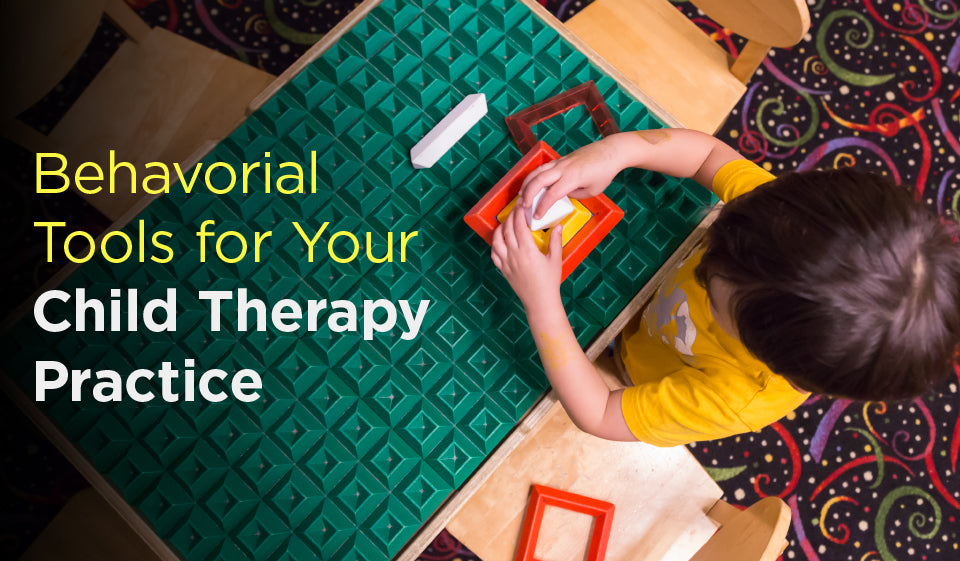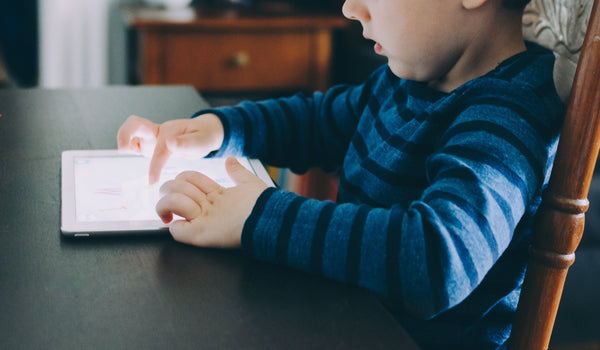Behavioral Tools for Your Child Therapy Practice

Have you ever attempted to have a one on one, verbal discussion only, conversation with a young child? If you answered yes, you can almost unanimously confirm that this was an extremely difficult feat. Despite their emotional or mental capacity, children need stimulation other than verbal only communication to fully express themselves. Children typically tend to be visual, hands on learners that need more than a face to face conversation. A friendly, safe environment is essential in child therapy as well as physical tools to assist the child in conveying their feelings.
Play therapy has been proven time and time again to enhance therapeutic rapport between a child and their therapist. In Child-Centered Play Therapy, children use toys in a structured play scenario to assist them in expressing themselves. Hartwig discusses in her article “Puppets in the Playroom: Utilizing Puppets and Child-Centered Facilitative Skills as a Metaphor for Healing” the purpose of play therapy for trauma and emotional concerns. She states that play therapy is an essential tool as “children can express themselves and make choices about toys and activities in the playroom without having to meet expectations for knowledge or cooperation from the play therapist.”(Hartwig, 2014). Thus, play, can ease the mind of the child, letting them feel free to express their emotions.
The environment for child therapy is absolutely essential to a productive session. Tools used during play therapy are extremely important and can aid the process quicker than just a face-forward conversation. There are several tools that can be employed during therapy that are easy to find and easily understood and enjoyed by children. The Friendship Circle website offers several different tools that are beneficial for working with children. One of the first tools that the article suggests is board games. Board games that a child is familiar with can ease the introduction to a new environment, especially if it is a board game the child loves or knows. Board games also help the therapist to gauge cognitive levels and a child’s ability to socialize, take turns, play fair, etc.
Therapeutic workbooks can also assist the child in solving emotional problems. This also helps assess the child’s learning ability as well as emotional ability. The My Moods My Choices ™ Flipbook is an absolutely essential asset during play therapy or any type of behavioral or emotional therapy with children. This flipbook displays twenty different moods for children to choose to express the way they are feeling. The flipbook also provides children with numerous positive ways to deal with this mood in an age appropriate and socially appropriate manner. The My Moods My Choices flipbook is also a sturdy book that can be propped up and displayed on a desk, bedside table, or any other surface where the child is at.
Artistic expression is also extremely important to aid in child therapy. For many children, it is easier to draw or color their feelings or stressful situations than it is to talk about them. Having a supply of arts and crafts tools is essential in any play therapy setting. Puppets and dolls also assist children in role playing during therapy.
Puppets and dolls can act as representations for themselves or family members, friends, teachers, etc. These toys also act as tools for children telling a third person narrative of their own issues, which can be far easier than having the child speak about their problems in first person. Hartwig does caution, however, that it is extremely important for the therapist to stay in the child’s metaphor that they are creating. If a child uses a toy for storytelling, they are giving that toy a voice that typically can represent the voice of the child themselves. “By staying in the metaphor with a child, the therapist uses facilitative skills directed toward the child or puppet character, depending on the intent of the child.”
Play therapy, although a seemingly simplistic and altogether fun setting, can greatly assist a child on feeling comfortable in a therapeutic environment. When a child feels comfortable and happy, they can more accurately work through an issue with a therapist and develop skills to express themselves in any situation.
Sources:
10 Essential Tools For Therapists And Special Educators - Friendship Circle - Special Needs Blog
http://www.friendshipcircle.org/blog/2012/03/01/10-essential-tools-for-therapists-and-special-educators/
Hartwig, E. K. (2014). Puppets in the Playroom: Utilizing Puppets and Child-Centered Facilitative Skills as a Metaphor for Healing . International Journal of Play Therapy, 23(4), 204-216.
Also in Blogs

Does Your Child Live in a High-Conflict Environment?

“What's On?” The Impact Of Media On Kid's Emotional Well-being

